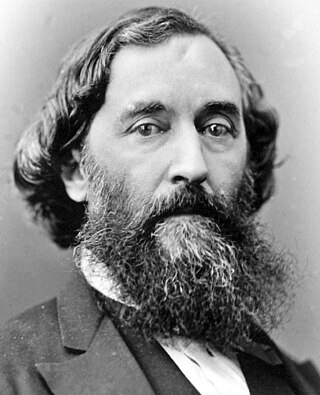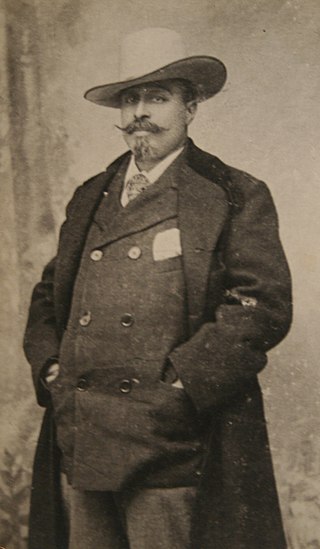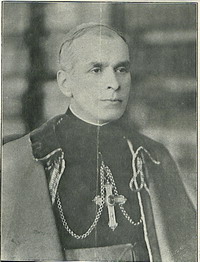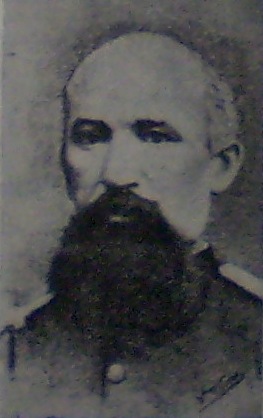
The Argentine Confederation was the last predecessor state of modern Argentina; its name is still one of the official names of the country according to the Argentine Constitution, Article 35. It was the name of the country from 1831 to 1852, when the provinces were organized as a confederation without a head of state. The governor of Buenos Aires Province managed foreign relations during this time. Under his rule, the Argentine Confederation engaged in conflicts with Brazil, Bolivia, Uruguay, France and the United Kingdom, as well as other Argentine factions during the Argentine Civil Wars.

Bartolomé Mitre Martínez was an Argentine statesman, soldier and author. He was President of Argentina from 1862 to 1868 and the first president of unified Argentina.

The Argentine Naval Prefecture is a service of Argentina's Security Ministry charged with protecting the country's rivers and maritime territory. It therefore fulfills the functions of other countries' coast guards, and furthermore acts as a gendarmerie force policing navigable rivers.

Drinking water supply and sanitation in Argentina is characterized by relatively low tariffs, mostly reasonable service quality, low levels of metering and high levels of consumption for those with access to services. At the same time, according to the WHO, 21% of the total population remains without access to house connections and 52% of the urban population do not have access to sewerage. The responsibility for operating and maintaining water and sanitation services rests with 19 provincial water and sewer companies, more than 100 municipalities and more than 950 cooperatives, the latter operating primarily in small towns. Among the largest water and sewer companies are Agua y Saneamientos Argentinos (AYSA) and Aguas Bonarenses S.A. (ABSA), both operating in Greater Buenos Aires, Aguas Provinciales de Santa Fe, and Aguas Cordobesas SA, all of them now publicly owned. In 2008 there were still a few private concessions, such as Aguas de Salta SA, which is majority-owned by Argentine investors, and Obras Sanitarias de Mendoza (OSM).

Domingo Cullen was the governor of province of Santa Fe, Argentina during 1838.

The Buenos Aires Western Railway (BAWR), inaugurated in the city of Buenos Aires on 29 August 1857, was the first railway built in Argentina and the start of the extensive rail network which was developed over the following years. The locomotive La Porteña, built by the British firm EB Wilson & Company in Leeds, was the first train to travel on this line.

Luigi Trinchero was an Italian sculptor, most active in Argentina after 1888, most notably the bas-reliefs and busts on the facade of the Teatro Colón.

Salvador María del Carril was a prominent Argentine jurist and policy-maker, as well as his country's first Vice President.

Zenón Rolón was an Afro Argentine musician and composer. Born in Buenos Aires, he composed approximately 80 works including operas, operettas, zarzuelas and sacred music. Rolón also founded a music publishing company which published numerous works by contemporary Argentine composers. Many of his manuscripts are now held by the Instituto Nacional de Estudios de Teatro, in Buenos Aires, and by the Museo Histórico de Morón, the city where he died at the age of 45.

Pascual Echagüe, was an Argentine soldier and politician. He served as Governor of Entre Ríos and Santa Fe provinces and Minister of War and Navy during the governments of Urquiza and Derqui. He participated in the Argentine Civil Wars and the Uruguayan Civil War.

Francisco de Manzanares y Dardos (born-16th-century) was a Spanish nobleman and politician, who served during the Viceroyalty of Peru, holding honorary functions as alcalde, alguacil, lieutenant governor and regidor of Buenos Aires.
Julio César Brero(also spelledGiulio Cesare; 20 December 1908 Milan – 8 December 1973 Milan) was an Italian-born Argentine composer, music educator, and lawyer.

Pedro de Roxas Acevedo was a Spanish military officer, and politician, who served in Buenos Aires and Asunción holding honorary positions, including the post of Governor of the Río de la Plata and Paraguay, on an interim term between January 8, 1641, to July 17, 1641.
Diego Gutiérrez de Humanes was a Spanish politician and military man who served in the Viceroyalty of Peru as Lieutenant Governor of Santa Fe, Argentina.
Toribio de Peñalva (c.1606-c.1685) was a Spanish military man, who served during the Viceroyalty of Peru as Alcalde de la hermandad and Procurator General of Buenos Aires.

Mario Zanin, sometimes referred to by the French form of his name, Marius Zanin, and also known by the Chinese name Cài Níng (蔡寧), was an Italian prelate and papal diplomat. He served as Apostolic Delegate to China from 1933 to 1946, as Apostolic Nuncio to Chile from 1947 to 1953, and as Apostolic Nuncio to Argentina from 1953 to 1958.
Leonardo Gribeo was an Italian conquistador, in service of the Spanish Crown. In 1536, he was part of the expedition of Pedro de Mendoza in the Río de la Plata, having an active participation in the conquest of Buenos Aires and Asunción.

Dora Gález (1903–2002) was a pioneering Argentine actress and vedette. She was one of the first stars of the Maipo Theater, and given the title of the "nightingale of the house". Other early co-stars with whom she worked were Carmen Lamas, Gloria Guzmán and Tita Merello. In 1924, she was in the cast of Roberto L. Cayol's Revue ¿Quién dijo miedo? which featured music by Arturo De Bassi along with Iris Marga, César Fiaschi, Carmen Lamas, and the debut performance of Tita Merello.
Vicky Astori, known as Bice or Bicky Astori, was an Italian actress who made her career in Argentina.

Juan Bautista Charlone, born Pietro Giovanni Battista Chiarlone was an Italian-born Argentine Colonel who participated in the Uruguayan Civil War, the Argentine Civil Wars and the early to mid years of the Paraguayan War. He was known for being a major commander at the Battle of Tuyutí before falling during the Battle of Curupayty.













